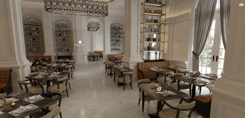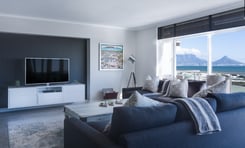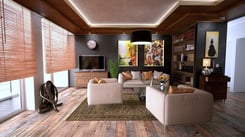An eye for design and the ability to create stunning spaces are undoubtedly essential for architects, interior designers, and other commercial design businesses. However, being an expert in aesthetics, ergonomics, and innovation is not enough to land a project -- it’s all in giving an outstanding pitch.
The perfect pitch can be the deciding factor that will set you apart from others that are competing for the same project and convince your client that you are the person for the job. And while your design skills may be great, the pitch is your chance to bring to the light how exactly you or your team excel in producing what your client is looking for - it is up to you to be able to sell your proficiency, passion, and talent.
While Zoom has become one of the most used and notable applications since the beginning of this pandemic, there are other tools and platforms that are not only made specifically for those in the commercial design industry but can elevate your current processes and take them one step further. Perhaps around end of March or early April you started hearing of others in the industry making the plunge into using immersive technologies like Virtual Reality - and for good reason. The powerful yet mobile technology is the next phase in visualizing projects for both interior design teams and during client-facing presentations. And especially during these times where the need for agile technologies that are easily adaptable, VR is a fantastic tool for designers conducting remote pitches.
1. An Alternate to Physical Prototypes
When it comes to interior design or architecture, many firms, especially for large projects, will choose to clock in the pain-staking hours of creating a miniature detailed model of their design. Producing a replica not only gives a tangible understanding of the layout of the space but it also allows your clients to see your skills and abilities, leading to greater confidence in what you’re able to create. However, in our current climate, being able to show your clients and present the physical model is now limited to what you can capture in a photo. And while there are certain cities that have started loosening restrictions, your clients or perhaps you and your team just don’t feel comfortable meeting in person for the time being.
VR experiences allow your clients to instantly understand the size and scale of your project - explore this project to see for yourself!
Through its immersive capabilities, VR particularly excels in communicating size and scale effortlessly. While every design professional possesses the ability to read and understand floorplans and renders, this skill may not come naturally to many of your clients. And with any project you take on, you always want to avoid any risk of your clients not fully comprehending your design. Rather than trying to read and view your plans on a screen, Virtual Reality immerses your clients inside your experience, allowing them to “walk” around and get a real feel of what their potential space will look like. And since these technologies are fully mobile, any designer and client can access and experience your projects from any location.
2. Allocate Time Elsewhere
By opting for an immersive digital twin instead of a physical prototype, designers can use that time to complete other tasks. Whether it be starting on the next bid, enhancing another project, or finishing up some paperwork, the time, energy and effort it would take creating perfectly small and detailed miniatured models can be repurposed elsewhere. However, one common concern/misconception amongst designers is how time-consuming it would take to create a virtual project, let alone their first VR design.

Here's a cubemap made and stitched together using our free Yulio plugin.
The good news is that creating projects ready to be viewed in VR is quick, painless, and for the most part, requires zero new training. For designers using CAD software and 3D modelling programs, there are plenty of free plugin options that will work with your current workflows without being severely disruptive. With just a few additional steps, you can easily convert your files into a cubemap or stitch the faces together. However, if you’re looking for one plugin that can do both with just one click, the free Yulio CAD plugins for SketchUp, CET Designer, 3DS Max and more can help you create a VR-ready project in just a matter of minutes.
3. Wow Your Clients
From furniture dealers to professors, one common reaction we hear from all our clients is the certain “wow” effect a VR presentation has on their clients or students. There’s just something about putting a VR headset on and seeing and standing in a space much that’s much bigger than the room you’re sitting in. Lizzy French, a designer at Storr Office Environments and Yulio user, uses Virtual Reality for this exact reaction from her clients.
“If it’s a brand new customer or we want to wow someone and bring everything possible to the table, we build a VR presentation.”
- Lizzy French, Storr Office Environments
While this technology is a great tool for impressing your clients, it also can help encourage a sense of greater confidence with decision making. Virtual immersive experiences especially in the design industry allow clients to “try” your space out before committing to your team or signing off on the final yes. Because your clients are able to look up, down, and all around your digital project, they are able to make informed decisions with greater assurance and certainty.
VR: The Ultimate Tool for Remote Pitching
Although VR is an excellent mobile platform, its immersive capabilities and ability to establish a line of perfect communication between designer and client can also be utilized when businesses get back to “normal” and in-person meetings are a possibility. Ultimately, investing in this technology is not just a COVID-19 fad, but one that can help elevate your remote pitches and client-facing presentations today and moving forward.
Deciding on which VR platform to go with can be a difficult process. Here’s an online resource that will guide you through all the questions you need to ask before making your final decision. For more information on creating your first VR design, click here to access our Whitepaper.



.jpg?width=245&height=150&name=iStock_88161583_XLARGE%20(1).jpg)



